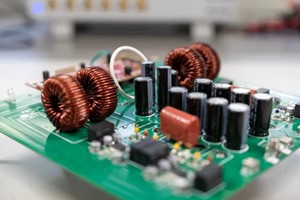The evolution of electric power distribution has long been dominated by alternating current (AC) systems, stemming from the famous "Current War" of the late 19th century. However, as modern needs expand to include renewable energy sources like solar power and the proliferation of DC-dependent technologies such as electric vehicles and data centers, the limitations of AC grids become apparent. The conversion from AC to DC and vice versa incurs energy losses and inefficiencies. In response, researchers Mishima Tomokazu from Kobe University, Japan, and Lai Ching-Ming from the National Chung Hsing University, Taiwan, embarked on a project focused on advancing DC microgrid technology.
Their collaborative effort, detailed in the IEEE Transactions on Power Electronics, outlines a breakthrough in high-power density power distribution systems tailored for low-carbon data centers. Led by Kobe University student Liu Shiqiang, the team's design principles prioritize versatility and efficiency, crucial for integrating diverse renewable energy sources and managing bidirectional energy flow within DC microgrids. Liu highlights the innovation's ability to interface efficiently with various energy sources, its self-balancing inductor currents for enhanced stability, and asymmetrical duty limit control for optimized performance, particularly in DC microgrids connected to electric vehicles.
Evaluation of their prototype demonstrated remarkable efficiency, reaching up to 98.3 percent. This underscores the practical viability and scalability of their proposed topology for real-world applications, heralding a new era in bidirectional DC-DC conversion technology. With a patent filed in Japan and plans for commercialization through UPE-Japan, a startup affiliated with Kobe University, the team is poised to advance their design further. Their roadmap includes enhancing power densities and expanding applications to address the evolving needs of microgrid infrastructure.
Looking ahead, Liu emphasizes their commitment to fostering efficient, reliable, and sustainable energy storage and conversion solutions. Their overarching goal is to accelerate the transition towards greener energy practices, particularly in the realms of electric vehicles and renewable energy integration.












